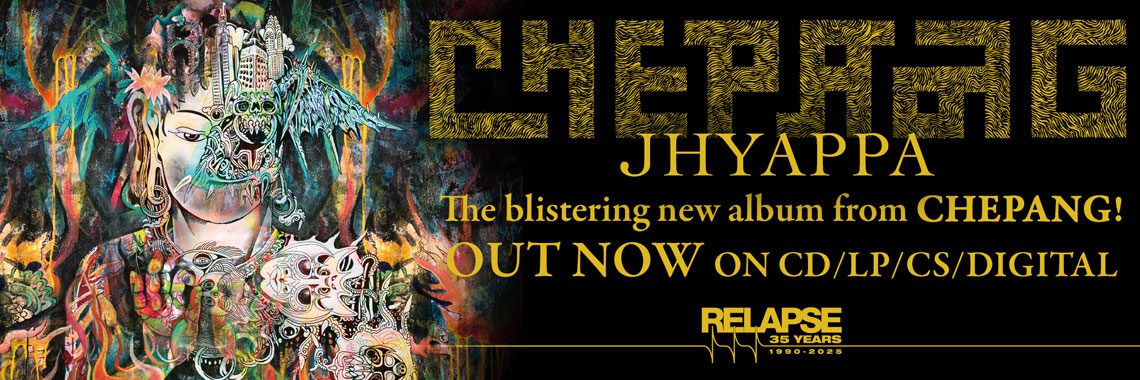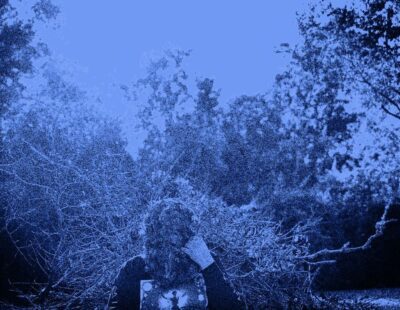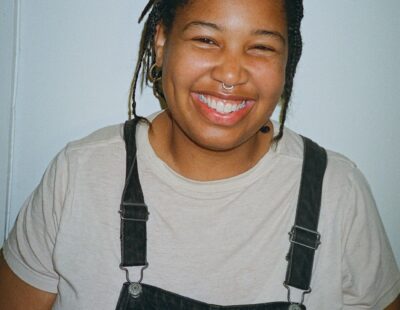
Death metal and comic books: is there a better combination in the history of the universe? I don’t think so, and I suspect our man Matt Harvey doesn’t, either. Harvey knows a thing or two about death metal: two of his bands have a split 10-inch coming out tomorrow: Twisted Horror features three new Exhumed splatters and two fresh Gruesome cuts (diehard fans will put together the title of the split as being a nod to both bands’ most recent full-lengths). It’s a glorious death metal cacophony, and to celebrate its release, we got Harvey, who knows a thing or two about comic books, to go over his top-five horror comics of all time.
“Disclaimer—it’s pretty tough to narrow it down to just five, and I didn’t even include any Creepy or Eerie issues, let alone Vincent Locke’s excellent Dead World, or even Faust, which features wonderful art by Tim Vigil, so I apologize in advance,” says Harvey. “Also, Black Hole by Charles Burns gets an honorable mention as a personal favorite. With that out of the way, here goes.”
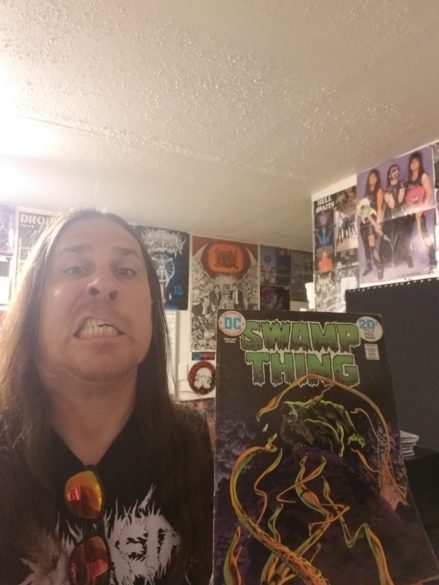
5. Swamp Thing #8 (1974, DC Comics)
A list of great horror comics without at least one from Berni Wrightson would be no list at all. In the early run of Swamp Thing, writer Len Wein and Wrightson had a lot of fun juxtaposing Swamp Thing with slight reimaginings of famous monsters like Dracula, Frankenstein, etc. This one is my favorite of that era because “The Lurker in Tunnel 13,” M’nagalah, is an amorphous, grotesque blob in the Lovecraftian vein. For four pages, Alec Holland (a.k.a. Swamp Thing) is plunged in a miasma of cosmic horror, and nobody can render it as well as Wrightson. His art on Bernie Wrightson’s Frankenstein is the apex of a brilliant career, but that’s more of a novel with pictures, and this is a straight-up stand-alone comic-book issue. You wouldn’t be able to find a stinker in Wrightson’s oeuvre, but this one stands out to me as a personal fave.
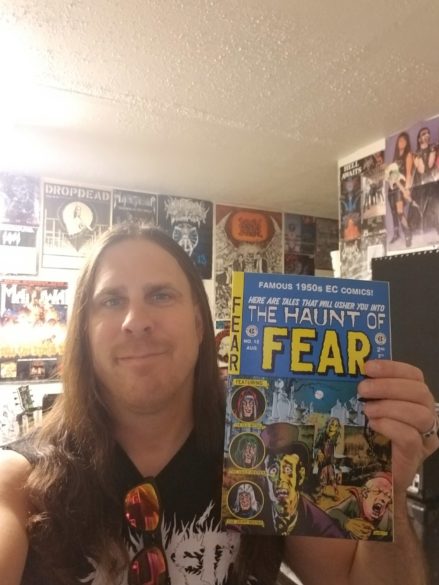
4. The Haunt of Fear #12 (1952, EC Comics)
You can’t talk about horror comics without mentioning the EC classics of the ’50s: Tales from the Crypt, Shock SuspenStories, The Vault of Horror and The Haunt of Fear. Since I’m forced to choose for the purpose of this piece, I’d have to say my favorite is The Haunt of Fear. My reasoning? Haunt featured the most art from my personal favorite horror artist in the EC bullpen, Graham “Ghastly” Engels. Engels’s eye for detail and shading was both eerie and gross. The great Jack Davis might have had a better hand for gory details, but his art was very direct; Engels combined nasty visuals and an atmosphere of dank, foreboding decay. #12 has my favorite Engels cover, a couple of Victorian gentleman fleeing in terror as a rotting corpse shambles toward them from an open grave. I think Engels’s style was the precursor to what Berni Wrightson would do in the ’70s and ’80s, where he rightfully claimed the mantle of “Master of the Macabre.” Within Haunt #12, we get the usual EC twist endings, with great art from Engels (“Poetic Justice”), Jack Davis (“What’s Cookin’?”) and the often-overlooked but excellent Joe Orlando (“Till Death Do We Part”) as well as EC mainstay Johnny Craig (“On a Dead Man’s Chest,” the weakest story of the four, in my estimation). That you can probably guess the outcomes of a couple of these stories from the titles alone is a testament to how well-established the EC formula is, because it fucking rules.
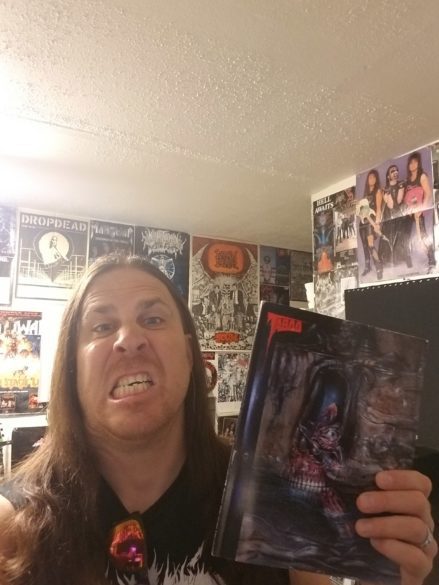
3. Taboo #6 (1990, Spider Baby Graphix)
Taboo was a hardbound anthology curated by the great Steve Bissette. Bissette is a great artist in his own right, but my personal favorite issue is #6, which features not only an amazingly gruesome cover, but Neil Gaiman, Charles Burns and Alan Moore. The amount of talent packed into each volume of this comic is insane. Maybe this issue is my favorite because it’s the first one I got and the depth and quality of the material is just insane. I knew Bissette from his run on Swamp Thing in the ’80s (with Alan Moore) and the mag he put together outside of the “safer” confines of mainstream (or in the case of his work on Swamp Thing, mainstream-adjacent) comics was pretty wild. Alan Moore’s From Hell and Lost Girls (both great books) were serialized in Taboo. Every issue is an embarrassment of riches from some of the best writers and artists in the medium at the time (late ’80s/early ’90s).
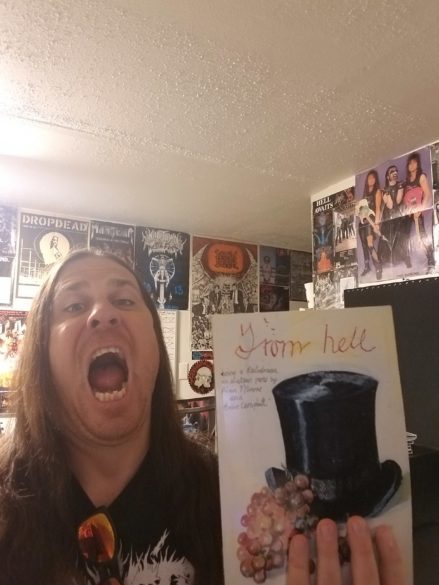
2. From Hell (1991, Mad Love/Tundra)
Before it was a not-particularly-good movie, From Hell was an excellent comic book. Although at eight issues of 45-plus pages each, with lengthy discourses about city planning, Victorian conspiracies, transcendental time travel, ritualized murder and freemasonry, this is a case where the term “graphic novel” might rightly apply. (For the record, I’m not a fan of the term “graphic novel”; I’m not ashamed to be a comic-book reader, I don’t need a sheen of sophistication to justify reading comics as an adult. Fuck that shit.) Written by the incomparable Alan Moore (whose excellent Watchmen is rightly regarded as a touchstone of the entire medium and was also a not-particularly-good movie) and drawn by the great Eddie Campbell, the book takes us into the life of royal surgeon William Gull, a.k.a. Jack the Ripper. Although the “Gull as Ripper” theory has been factually discredited, it makes an incredibly compelling narrative and a gripping read. Moore is characteristically meticulous (they published his scripts separately, and they’re insanely detailed) and Campbell’s stark, almost scribbly black-and-white art sets a very dreary vibe for the whole affair. This is a comic that certainly stands as literature, in my estimation, plotted and rendered with a precision and flair that makes it one of the all-time greats.
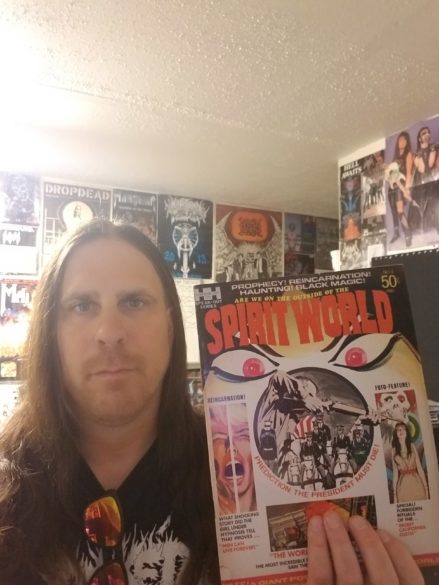
1. Spirit World (1971, Hampshire Distribution)
Jack “King” Kirby is mostly known for co-creating Captain America in the forties and working with Stan Lee in the ’60s to give birth to the Marvel Universe (Thor, X-Men, Fantastic Four, Iron Man, yadda yadda). In the early ’70s he left Marvel to work for DC, where in addition to creating his epic Fourth World series that introduced arch-villain Darkseid, Kirby pitched a couple of high-concept magazine-format books. The two that were published were Days of the Mob and Spirit World. While Days hearkens back to the gangsters of Kirby’s youth in the ’30s and ’40s, Spirit World is distinctly of its time. The anthology features stories dealing with apocalyptic premonitions, West Coast cults and reincarnated witches—way outside the King’s wheelhouse. We see one of the giants of the comic-book medium taking chances and working with photo collages, rather than churning out yet another super-hero yarn. Kirby is my primary inspiration in life, as an artist and a person, and this may not be the style he’s been immortalized for, but it’s great, weird stuff regardless. I’m a sucker for his black-and-white photo collages and his willingness to stretch the comic-book medium. I’m still looking for a second copy of this mag so I can frame the poster that’s included.

